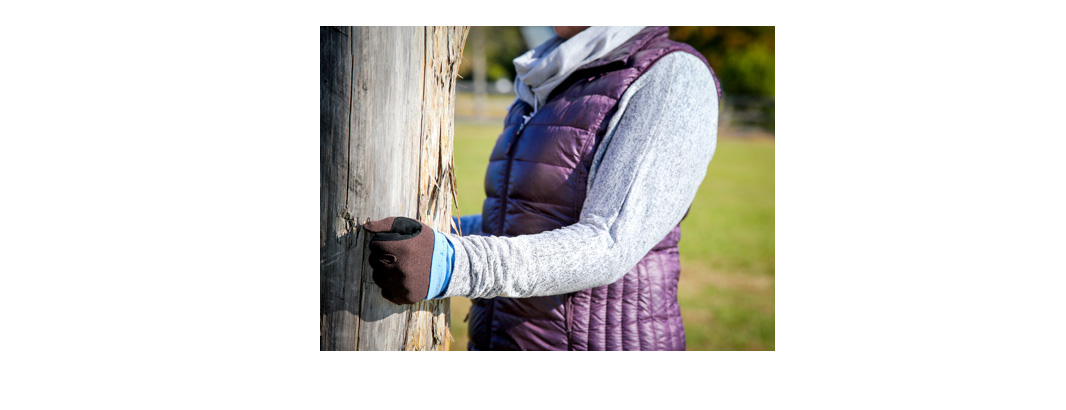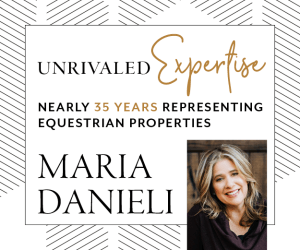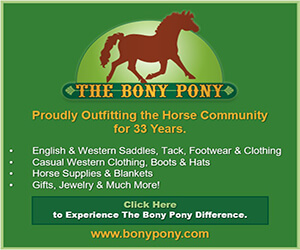The Three Rein Actions
by Shelbie Fredenhagen
“The hands are the measure of a man’s intelligence.” – Maria Montessori
Your hands are the most important aid you have. Because you are directly in contact with the most sensitive part of your horse, the mouth, it is paramount that you have control of and ride with sensitivity in your hands. Even if you use a bitless bridle, the way you act with your hands will either encourage the horse to follow or brace into your contact. Our goal as riders is to create rein contact that the horse wants to follow instead of push through or pull against.
There are three ways the reins can act: direct, indirect (neck rein) and opening. The following exercises will help you get in tune with your hands and show you how to act on the horse’s mouth. Whatever your discipline, we want to achieve positive tension through these different actions.
Direct Rein: A direct rein is always a lifting rein, never a backwards acting rein; it should always act directly on the corner of the horse’s mouth, not on the horse’s bars or tongue. If you are stopping a horse, asking them to bend, or simply taking contact, always do this with an upward take on the rein before you shorten the rein.
To maintain that carrying/ independent hand, imagine you are carrying a weighted tray on your forearms. Picture it having a full tea set on top that you are keeping balanced and flat. How would you present this tea tray? By pushing your elbows forward to bring the tray forward. This gives your horse the feeling that you are stable, while maintaining a forgiving contact.
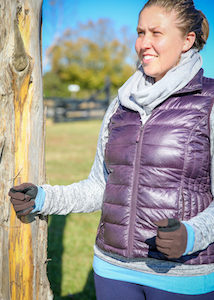
Opening Rein: An opening rein is when you bring your hand away from the horse’s neck. You use it to give the horse’s shoulder room to move into the space you provide.
To practice the feel of an opening rein from the ground, place the outside of your wrist on a post and push into it. Keep your elbow flexed near 90 degrees and softly at your side. You should feel the back of your bicep and lats (latissimus dorsi) engage to create this action. It’s important to keep your elbow near your side.
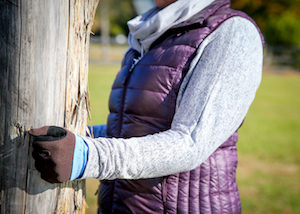
Indirect Rein: The indirect rein is an important aid to move the shoulder. Teaching and using the neck rein effectively can make many movements easier, such as closing gates, shoulder-in and half pass. It acts when you bring your hand toward the horse’s crest so that the rein is making contact with their neck.
To gain the feel of this rein motion, place the inside part of your wrist against the same post. Keep your elbow heavy and close to your side as you push from your elbow (not your wrist) into the post, while engaging your bicep. Have your hand in a soft fist and roll your knuckles into the post to maintain a straight line through your wrist. This is the same feel as you want into the horse’s crest. Remember to maintain bend in the knee and have a soft pelvis, even when you are concentrating on your hand.

Partner up: Now have a partner hold reins to represent the horse’s mouth. Have your partner move the reins like a horse would in walk, back and forth. Take note of what your normal habits are. The partner acting as the horse should mimic what they are receiving from the rider. Do they feel like they are being pulled or hung on?
Drop the reins and go back through the movements to regain your independent balance—one that isn’t hanging onto or relying on your partner’s connection, i.e. your horse’s mouth. Recreate how your wrists can carry themselves, feeling that weighted platter with heavy elbows and soft shoulders. Maintain that connection as you are moving with your partner in walk.
Try using an opening rein, indirect, and direct. How does the contact feel to your partner now? If your partner’s reaction is to pull, then you know something in your contact is bracing. Your partner and you should feel like you are holding hands through the rein contact, that you could walk comfortably together for miles. This is the contact we are seeking with the horse.
Originally Published January 2018 Issue
Shelbie Fredenhagen is a classical equitation trainer originally from Anchorage, Alaska. Now based in Alachua, Florida, Shelbie offers lessons, clinics and training opportunities for all levels with a focus on preserving the health of both horse and rider. She frequently returns to the Pacific Northwest to teach. More information can be found at http://www.bodhiequus.com/


